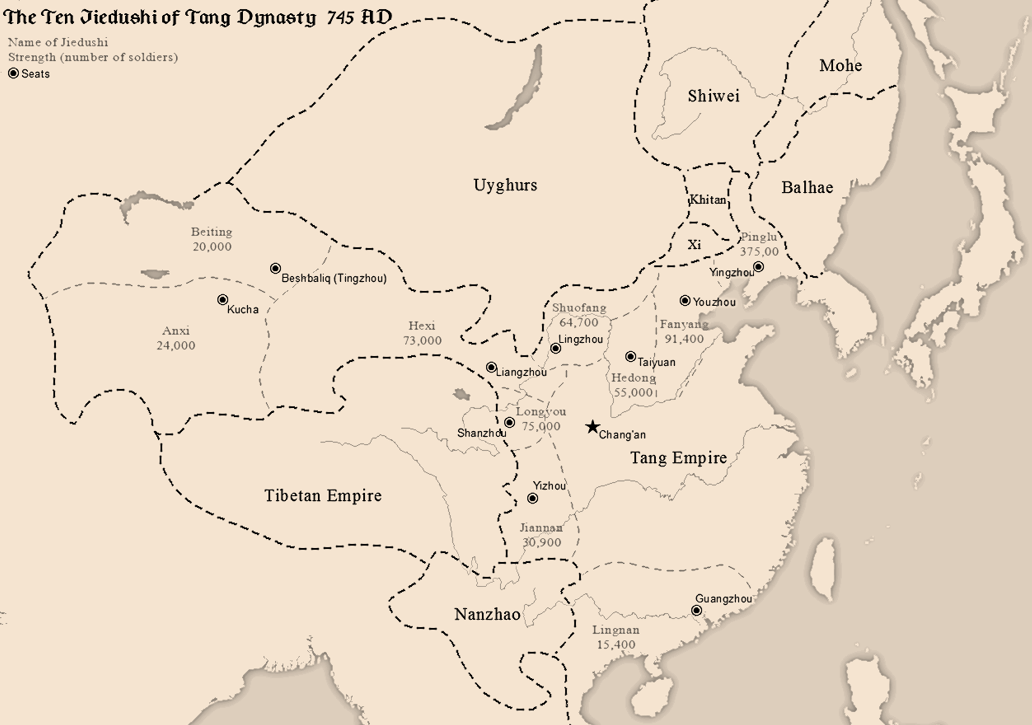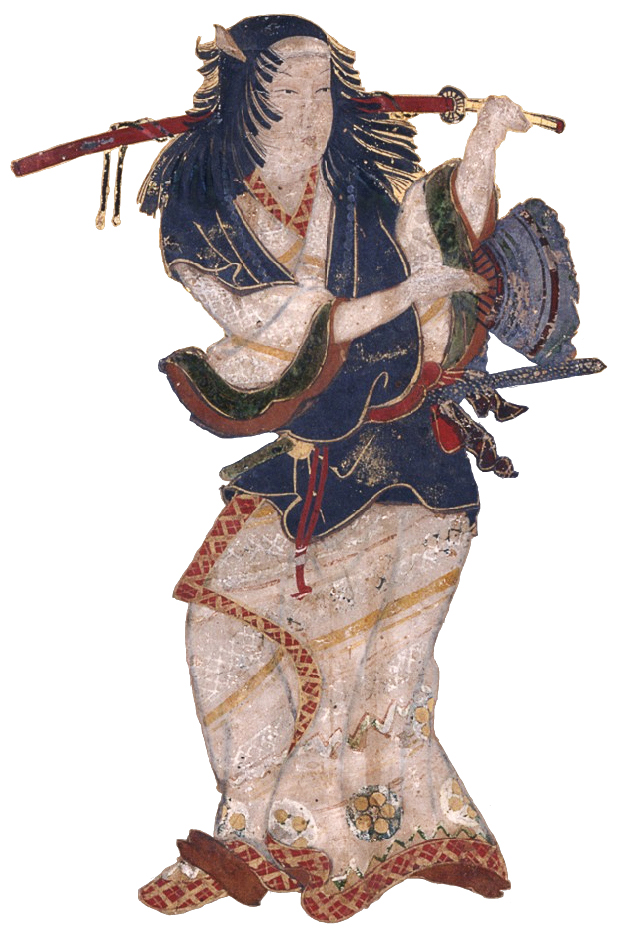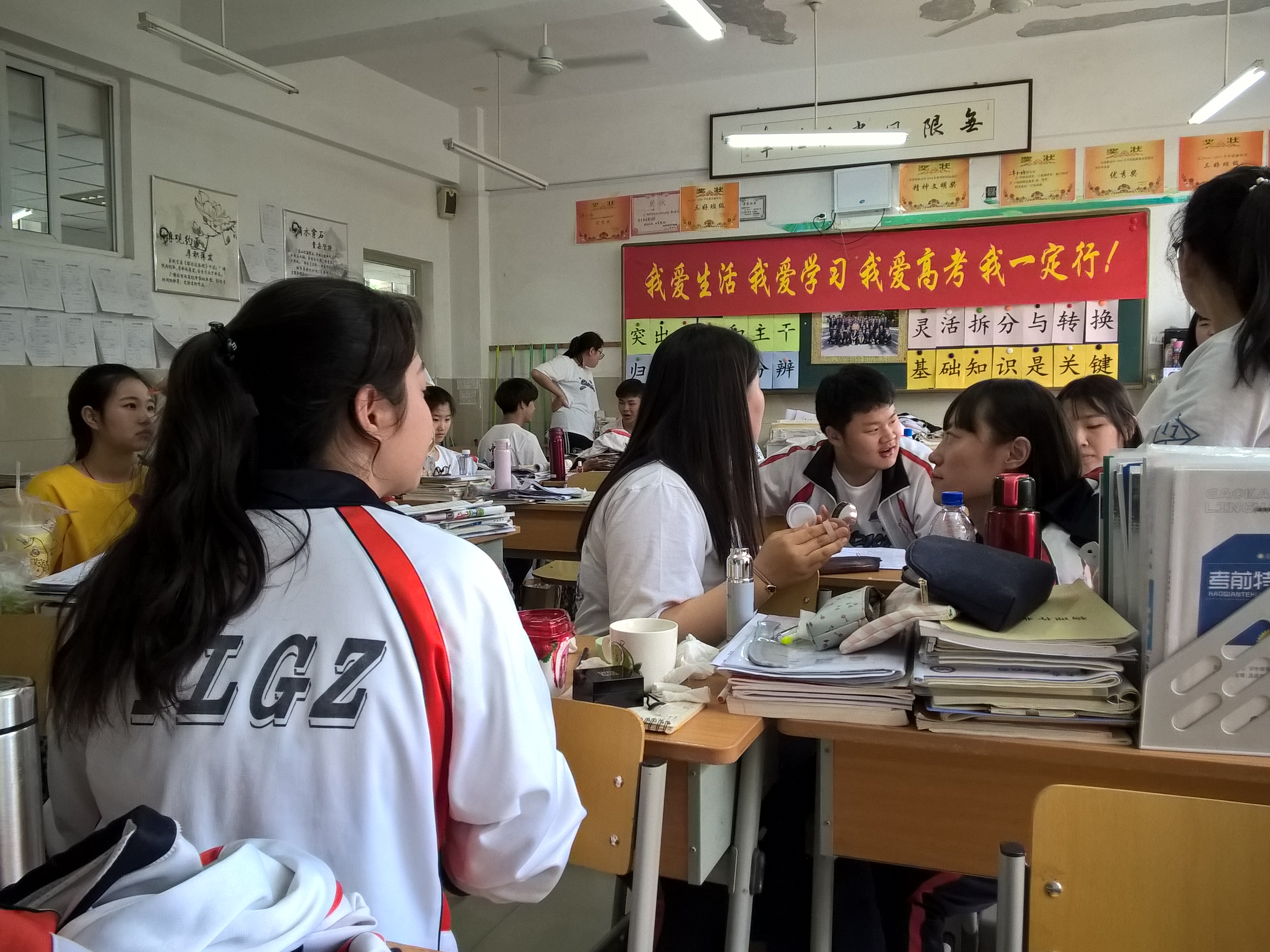|
Pear Garden
The Liyuan or Pear Garden was the first known royal performing arts and musical academy in China. Founded during the Tang dynasty by Emperor Xuanzong (712–755), it is an example of an early institutional academy of performing arts and music. The Tang dynasty (618–907) is sometimes known as "The Age of 1000 Entertainments". Emperor Xuanzong established a school in the palace city Chang'an (now Xi'an) for performances in music, dancing, and acting. Three hundred musicians and performers were trained annually under the supervision of the emperor, who sometimes joined in the training as well as the performances. The Pear Garden, so named after the pear trees planted inside, was an acting school established to produce a form of drama that was primarily musical, although this suffered from the vicissitudes of the An Lushan Rebellion. Performers were commonly called "Children of the Pear Garden", and in later dynasties the phrase "Pear Garden" was used to refer to the world of Chinese ... [...More Info...] [...Related Items...] OR: [Wikipedia] [Google] [Baidu] |
Tang Dynasty
The Tang dynasty (, ; zh, c=唐朝), or the Tang Empire, was an Dynasties of China, imperial dynasty of China that ruled from 618 to 907, with an Wu Zhou, interregnum between 690 and 705. It was preceded by the Sui dynasty and followed by the Five Dynasties and Ten Kingdoms period. Historians generally regard the Tang as a high point in Chinese civilisation, and a Golden age (metaphor), golden age of cosmopolitan culture. Tang territory, acquired through the military campaigns of its early rulers, rivalled that of the Han dynasty. The House of Li, Li family founded the dynasty after taking advantage of a period of Sui decline and precipitating their final collapse, in turn inaugurating a period of progress and stability in the first half of the dynasty's rule. The dynasty was formally interrupted during 690–705 when Empress Wu Zetian seized the throne, proclaiming the Wu Zhou dynasty and becoming the only legitimate Chinese empress regnant. The An Lushan rebellion (755 ... [...More Info...] [...Related Items...] OR: [Wikipedia] [Google] [Baidu] |
Emperor Xuanzong Of Tang
Emperor Xuanzong of Tang (; 8 September 685 – 3 May 762), personal name Li Longji, was an Emperor of China, emperor of the Tang dynasty of China, reigning from 712 to 756. His reign of 44 years was the longest during the Tang dynasty. Through two palace coups, he seized the throne and inherited an empire still in its golden age. He was initially assisted by capable chancellors like Yao Chong, Song Jing and Zhang Yue (Tang dynasty), Zhang Yue who were already serving as government officials before Xuanzong ascended the throne. However, under Emperor Xuanzong, the empire reached its turning point and went into sharp decline and near collapse, due to numerous political missteps throughout his long reign, such as over-trusting chancellors Li Linfu, Yang Guozhong and general An Lushan, with Tang's golden age (metaphor), golden age ending in the An Lushan rebellion. Background Li Longji was born at the Tang dynasty eastern capital Luoyang in 685, during the first reign of his fat ... [...More Info...] [...Related Items...] OR: [Wikipedia] [Google] [Baidu] |
Chang'an
Chang'an (; zh, t=長安, s=长安, p=Cháng'ān, first=t) is the traditional name of the city now named Xi'an and was the capital of several Chinese dynasties, ranging from 202 BCE to 907 CE. The site has been inhabited since Neolithic times, during which the Yangshao culture was established in Banpo, in what is now the city's suburbs. Furthermore, in the northern vicinity of modern Xi'an, Qin Shi Huang of the Qin dynasty, China's first emperor, held his imperial court and constructed his massive mausoleum guarded by the Terracotta Army. From its capital at Xianyang, the Qin dynasty ruled a larger area than either of the preceding dynasties. The imperial city of Chang'an during the Han dynasty was located northwest of today's Xi'an. During the Tang dynasty, the area that came to be known as Chang'an included the area inside the Ming Xi'an fortification, plus some small areas to its east and west, and a substantial part of its southern suburbs. Thus, Tang Chang'an was eight t ... [...More Info...] [...Related Items...] OR: [Wikipedia] [Google] [Baidu] |
An Lushan Rebellion
The An Lushan rebellion was a civil war in China that lasted from 755 to 763, at the approximate midpoint of the Tang dynasty (618–907). It began as a commandery rebellion attempting to overthrow and replace the Tang government with the rogue Yan dynasty. The rebels succeeded in capturing the imperial capital Chang'an after the emperor had fled to Sichuan, but eventually succumbed to internal divisions and counterattacks by the Tang and their allies. The rebellion spanned the reigns of three Tang emperors: Xuanzong, Suzong, and Daizong. On 16 December 755, An Lushan, the ''jiedushi'' of the Taiyuan Commandery, mobilized his army and marched to Fanyang. An Lushan led the rebellion for two years before he was assassinated by his son An Qingxu. Two years after An Qingxu's ascension, Shi Siming, the governor of Pinglu Commandery and a close ally of An Lushan, killed An Qingxu and usurped the leadership. Shi Siming ruled for two years, but was in turn killed by his own son ... [...More Info...] [...Related Items...] OR: [Wikipedia] [Google] [Baidu] |
Chinese Opera
Traditional Chinese opera (), or ''Xiqu'', is a form of musical theatre in China with roots going back to the early periods in China. It is an amalgamation of various art forms that existed in ancient China, and evolved gradually over more than a thousand years, reaching its mature form in the 13th century, during the Song dynasty (960–1279 AD). Early forms of Chinese theater are simple; however, over time, various art forms such as music, song and dance, martial arts, acrobatics, costume and make-up art, as well as literary art forms were incorporated to form traditional Chinese opera. Performers had to practice for many years to gain an understanding of the roles. Exaggerated features and colors made it easier for the audience to identify the roles portrayed by the performers. There are over a hundred regional branches of traditional Chinese opera today. In the 20th century, the Peking opera emerged in popularity and has come to be known as the "national theatre" of China ... [...More Info...] [...Related Items...] OR: [Wikipedia] [Google] [Baidu] |
Japan
Japan is an island country in East Asia. Located in the Pacific Ocean off the northeast coast of the Asia, Asian mainland, it is bordered on the west by the Sea of Japan and extends from the Sea of Okhotsk in the north to the East China Sea in the south. The Japanese archipelago consists of four major islands—Hokkaido, Honshu, Shikoku, and Kyushu—and List of islands of Japan, thousands of smaller islands, covering . Japan has a population of over 123 million as of 2025, making it the List of countries and dependencies by population, eleventh-most populous country. The capital of Japan and List of cities in Japan, its largest city is Tokyo; the Greater Tokyo Area is the List of largest cities, largest metropolitan area in the world, with more than 37 million inhabitants as of 2024. Japan is divided into 47 Prefectures of Japan, administrative prefectures and List of regions of Japan, eight traditional regions. About three-quarters of Geography of Japan, the countr ... [...More Info...] [...Related Items...] OR: [Wikipedia] [Google] [Baidu] |
Kabuki
is a classical form of Theatre of Japan, Japanese theatre, mixing dramatic performance with Japanese traditional dance, traditional dance. Kabuki theatre is known for its heavily stylised performances, its glamorous, highly decorated costumes, and for the elaborate make-up worn by some of its performers. Kabuki is thought to have originated in the early Edo period, when the art's founder, Izumo no Okuni, formed a female dance troupe that performed dances and light sketches in Kyoto. The art form later developed into its present all-male theatrical form after women were banned from performing in kabuki theatre in 1629. Kabuki developed throughout the late 17th century and reached its zenith in the mid-18th century. In 2005, kabuki theatre was proclaimed by UNESCO as an intangible heritage possessing outstanding universal value. In 2008, it was inscribed in the UNESCO Intangible Cultural Heritage Lists, UNESCO Representative List of the Intangible Cultural Heritage of Humanity ... [...More Info...] [...Related Items...] OR: [Wikipedia] [Google] [Baidu] |
Chinese Garden
The Chinese garden is a landscape garden style which has evolved over three thousand years. It includes both the vast gardens of the Emperor of China, Chinese emperors and members of the imperial family, built for pleasure and to impress, and the more intimate gardens created by scholars, poets, former government officials, soldiers and merchants, made for reflection and escape from the outside world. They create an idealized miniature landscape, which is meant to express the harmony that should exist between man and nature. The art of Chinese garden integrates Chinese architecture, architecture, Chinese calligraphy, calligraphy and Chinese painting, painting, sculpture, Chinese literature, literature, gardening and Chinese art, other arts. It is a model of Chinese aesthetics, reflecting the profound philosophical thinking and pursuit of life of the Chinese people. Among them, Chengde Mountain Resort and the Summer Palace, which belong to royal gardens, and several of the Classi ... [...More Info...] [...Related Items...] OR: [Wikipedia] [Google] [Baidu] |
Music Bureau
The Music Bureau (Traditional Chinese character, Traditional Chinese: 樂府; Simplified Chinese character, Simplified Chinese: 乐府; Pinyin, Hanyu Pinyin: ''yuèfǔ'', and sometimes known as the "Imperial Music Bureau") served in the capacity of an organ of various imperial government bureaucracies of China: discontinuously and in various incarnations, the Music Bureau was charged directly, by the emperor (or other monarchical ruler), or indirectly, through the royal (or imperial) government to perform various tasks related to music, poetry, entertainment, or religious worship. These tasks included both musical and lyrical research and development, and also directing performances. The existence of a Music Bureau was typical of various Chinese dynasties, though the Music Bureau's prominence and influence may have peaked during the reign of Han dynasty emperor Emperor Wu of Han, Wu, who was especially interested in such activities and engaged himself accordingly. The mission of th ... [...More Info...] [...Related Items...] OR: [Wikipedia] [Google] [Baidu] |
Performing Arts Education In China
A performance is an act or process of staging or presenting a play, concert, or other form of entertainment. It is also defined as the action or process of carrying out or accomplishing an action, task, or function. Performance has evolved globally, from ancient rituals to modern artistic expressions. Expanding the article with historical and cultural perspectives would improve its scope. Ancient & Classical Theater: Rooted in rituals (Egyptian passion plays, Indigenous storytelling), early performances led to Greek tragedy, Sanskrit drama, and Chinese opera. Medieval & Early Modern Performance: Includes mystery plays in Europe, Commedia dell’arte in Italy, and Kabuki & Noh in Japan. Contemporary & Political Performance: Modern forms include agitprop theater, Forum Theater, and performance art as activism. By highlighting global traditions, the article would better reflect performance as a universal human expression shaped by history and culture. Management science In the ... [...More Info...] [...Related Items...] OR: [Wikipedia] [Google] [Baidu] |
History Of Education In China
The history of education in China began with the birth of the Culture of China, Chinese civilization. Nobles often set up educational establishments for their offspring. Establishment of the imperial examinations (advocated in the Warring States period, originated in Han, founded in Tang) was instrumental in the transition from an Aristocracy, aristocratic to a Meritocracy, meritocratic government. Education was also seen as a symbol of power; the educated often earned significantly greater incomes. Shang and Zhou dynasties The first written mention of a "school" in China appears in the oracle bones of the Shang dynasty (about 1800–1050 B.C.E.), which constitute the first written records in China and the main historical record for that period.Lee, T. H. C. (2018). Education in Traditional China: A History. Retrieved from https://brill.com/view/title/1401 Used for divination, questions would be written on the bones before they were placed in a fire, and then the results printed ... [...More Info...] [...Related Items...] OR: [Wikipedia] [Google] [Baidu] |








